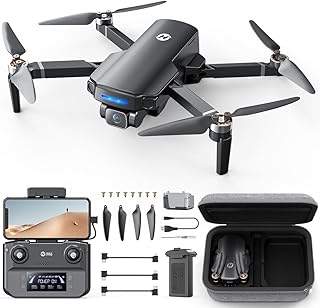Drone Regulations: Navigating the Complex Landscape of Air Space
The world of drones is rapidly evolving, with applications spanning from recreational activities to professional industries. However, this rapid growth comes with a complex regulatory landscape, necessitating careful navigation for both hobbyists and commercial operators. Here's a breakdown of the key aspects of drone regulations:
1. Federal Aviation Administration (FAA) Regulations:
* Registration: Most drones weighing over 0.55 pounds (250 grams) must be registered with the FAA. This process is relatively simple and can be completed online.
* Remote Pilot Certificate (Part 107): For commercial drone operations, pilots must obtain a Remote Pilot Certificate by passing a knowledge test and meeting FAA requirements. This allows for drone operation within certain parameters for commercial purposes.
* Operating Limits: Drones must be flown within visual line of sight (VLOS) unless authorized for Beyond Visual Line of Sight (BVLOS) operations. Other restrictions include:
* No flying over people unless approved by the FAA.
* No flying within 5 miles of an airport without prior authorization.
* No flying in controlled airspace without approval.
* Drone Safety: Operators must adhere to safety guidelines, including:
* Maintaining a safe distance from other aircraft.
* Avoiding flying over sensitive areas like prisons, nuclear power plants, and military installations.
* Being aware of weather conditions and airspace restrictions.
* Maintaining a safe and effective operating environment.
* Drone Use Cases: Regulations outline specific rules for different drone operations, including:
* Photography & Videography
* Real Estate Inspections
* Agriculture
* Law Enforcement
* Infrastructure Inspection
2. State and Local Regulations:
* Local Ordinances: Various cities and states have their own regulations on drone use, which may include:
* Restrictions on flying in certain areas (e.g., parks, beaches)
* Noise limitations
* Operating hours
* Specific permits or authorizations required
* Privacy Concerns: Regulations may also address privacy issues, especially when drones are used for aerial photography or surveillance.
3. International Regulations:
* ICAO Standards: The International Civil Aviation Organization (ICAO) sets international standards for drone operation, including:
* Aircraft registration
* Pilot licensing
* Airworthiness requirements
* Country-Specific Regulations: Individual countries may have their own specific regulations and requirements for drone operations.
Navigating the Regulations:
* Research: It is crucial for drone operators to research and understand the regulations applicable to their specific location and intended use.
* FAA Website: The FAA website is an excellent resource for information on drone regulations, including the Part 107 regulations, registration requirements, and safety guidelines.
* Professional Organizations: Organizations like the Association for Unmanned Vehicle Systems International (AUVSI) provide resources, guidance, and advocacy for drone operators.
* Drone Manufacturers: Manufacturers often provide information on their drones' capabilities and compliance with regulations.
Consequences of Non-Compliance:
* Penalties: Violations of drone regulations can result in fines, imprisonment, or even the revocation of operating privileges.
* Damage and Liability: Accidents caused by non-compliant drone operations can lead to significant damage and financial liability.
Conclusion:
Understanding and complying with drone regulations is essential for the safe and responsible operation of unmanned aerial vehicles. By navigating this complex regulatory landscape, drone operators can enjoy the benefits of this technology while adhering to the legal and ethical framework governing its use.


